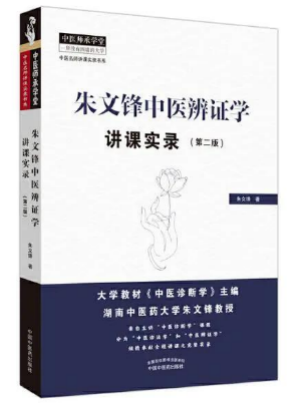 Enjoy Reading Traditional Chinese MedicineEvery Day11:30Pushes the Freshest
Enjoy Reading Traditional Chinese MedicineEvery Day11:30Pushes the Freshest
Authoritative Quality Knowledge of Traditional Chinese Medicine
If you like it, please star it for me
Editor’s Guide
Blood stasis syndrome is a common syndrome in clinical practice, and there has been considerable research on blood stasis syndrome. We are very familiar with this syndrome in clinical practice, but do you really understand blood stasis syndrome? What is blood stasis syndrome? How can we judge blood stasis syndrome? What are the causes of blood stasis syndrome? With these questions in mind, let us listen to Professor Zhu Wenfeng’s explanation.
What is blood stasis syndrome? It refers to the obstruction of blood flow, where blood circulation is impaired, which may manifest as systemic blood flow obstruction or localized blood flow obstruction. The concepts of blood stasis and blood stasis syndrome are not entirely the same. Blood stasis refers to blood that is stagnant in a certain area, while blood stasis syndrome refers to the various symptoms that arise due to the presence of blood stasis. Impaired blood circulation may be due to blood stasis remaining in a certain area, or it may not be due to blood stasis but rather symptoms arising from impaired circulation, which we call blood stasis syndrome.Blood stasis is a syndrome, while blood stasis refers to the specific material, the stagnant blood; there is a conceptual distinction between the two.

Manifestations:The manifestations of blood stasis syndrome can be summarized into four major aspects.The first major manifestation is “pain.” When there is blood stasis, pain will occur. The characteristics of pain due to blood stasis are stabbing pain, fixed and immovable, and tenderness is avoided; it may be more severe at night. Why is it more severe at night? Because blood circulation slows down at night, the obstruction of blood flow may become more pronounced, thus causing more pain at night than during the day.The pain has four characteristics—stabbing pain, fixed and immovable, tenderness avoided, and more severe pain at night, these are the characteristics of pain in blood stasis syndrome.The second manifestation is the presence of “masses.” These are easily detectable on the surface of the body, such as in fractures or after an injury to a certain area, where there may be purple-blue lumps; internal masses may not be visible, but can be palpated, especially in the abdomen, where if there is blood stasis, a hard mass may be felt that is not easily movable, which is a characteristic of blood stasis.The third manifestation is “bleeding.” Blood stasis obstructs the vessels, preventing blood from following its normal path, which can manifest as various types of bleeding. The characteristics of the bleeding are dark purple in color and may contain clots. If the blood is expelled immediately, it will not form a mass; if it is not expelled in time and remains for a while, it will turn dark purple and coagulate into clots; or it may present as dark, tar-like stools, or in women, as menorrhagia or metrorrhagia, which may all indicate blood stasis.The fourth manifestation is “color and pulse signs.” In observation or pulse diagnosis, there are certain signs of blood stasis, and of course, masses and bleeding are also signs. The color and pulse signs of blood stasis refer to some specific changes.

For example, dark complexion—this may indicate blood stasis and can be considered one of the indicators of blood stasis, but it is not absolute; one cannot diagnose blood stasis solely based on a dark complexion; when the complexion is dark, one should consider the possibility of blood stasis.
Blue-purple lips and nails—the color of the face, lips, and nails is dark purple, indicating a lack of oxygen, which means blood circulation is impaired.
Subcutaneous purpura—purple-blue spots, “yin purpura,” may also occur when the spleen fails to control blood; this generally occurs without external injury, resulting in patches of purple spots appearing without any apparent cause. This purpura is mostly indicative of blood stasis after an injury, such as bruises from falls or blows, where there is a clear history of trauma.
Skin and nail changes—the skin may show dry, dark spots resembling fish scales, indicating blood deficiency and blood stasis.
Visible blue veins in the abdomen—in patients with abdominal distension, the veins on the abdominal wall may be prominent; for example, the neck veins may also be engorged and very prominent.
Additionally, varicose veins in the lower limbs—this is a manifestation of impaired blood circulation.
Thread-like red lines—red lines appear on the skin, indicating capillary dilation, resembling red threads intertwined. In Western medicine, this is typically represented by a red dot in the center, which is a blood vessel; when pressed, the surrounding red lines disappear, and when released, the red dot reappears along with the surrounding red lines. In Western medicine, this is called spider angioma, resembling a spider with many legs, while in Traditional Chinese Medicine, it is referred to as thread-like red lines.
Or purple spots on the tongue, and engorged, thickened sublingual veins; the pulse is often thin and choppy, or may be knotted, intermittent, or even absent, for example, in cases of gangrene, where the artery is occluded and necrotic, resulting in the absence of a pulse in the lower limbs, indicating impaired blood circulation, thus also belonging to blood stasis. These are some common manifestations.
 Causes:The most common cause is trauma,which directly injures the exterior, causing fractures or ruptured blood vessels in the subcutaneous tissue, leading to obstruction and stasis, or injuring internal blood vessels, such as ruptured organs, concussions, or bleeding in the brain, all of which can lead to blood stasis. Therefore, trauma and falls are a cause of blood stasis. The second cause is qi stagnation leading to impaired blood flow. The third cause is blood cold or blood heat, both of which can lead to blood stasis. Cold causes blood to coagulate; heat forces blood to flow, and when blood is hot, it can lead to blood pooling together, such as in the case of sores and abscesses, where local qi and blood are excessively congested, leading to decay; blood heat can also concentrate the blood, resulting in stasis. The fourth cause is obstruction from damp-heat, phlegm turbidity, stones, etc., which can also impede blood flow. The fifth cause is qi deficiency and yang deficiency, which can lead to blood stasis. Blood stasis itself is a pathological product, resulting from impaired blood circulation. Why does blood circulation become impaired? It may be due to cold coagulating blood stasis, qi stagnation leading to blood stasis, or yang deficiency failing to promote blood circulation. Therefore, one cannot view blood stasis in isolation. Yang deficiency that fails to circulate blood, without warming yang or tonifying qi, and merely promoting blood flow and resolving stasis may not solve the problem; this understanding does not align with the principles of Traditional Chinese Medicine.
Causes:The most common cause is trauma,which directly injures the exterior, causing fractures or ruptured blood vessels in the subcutaneous tissue, leading to obstruction and stasis, or injuring internal blood vessels, such as ruptured organs, concussions, or bleeding in the brain, all of which can lead to blood stasis. Therefore, trauma and falls are a cause of blood stasis. The second cause is qi stagnation leading to impaired blood flow. The third cause is blood cold or blood heat, both of which can lead to blood stasis. Cold causes blood to coagulate; heat forces blood to flow, and when blood is hot, it can lead to blood pooling together, such as in the case of sores and abscesses, where local qi and blood are excessively congested, leading to decay; blood heat can also concentrate the blood, resulting in stasis. The fourth cause is obstruction from damp-heat, phlegm turbidity, stones, etc., which can also impede blood flow. The fifth cause is qi deficiency and yang deficiency, which can lead to blood stasis. Blood stasis itself is a pathological product, resulting from impaired blood circulation. Why does blood circulation become impaired? It may be due to cold coagulating blood stasis, qi stagnation leading to blood stasis, or yang deficiency failing to promote blood circulation. Therefore, one cannot view blood stasis in isolation. Yang deficiency that fails to circulate blood, without warming yang or tonifying qi, and merely promoting blood flow and resolving stasis may not solve the problem; this understanding does not align with the principles of Traditional Chinese Medicine.

Relationship with Other Pathologies:Blood stasis often coexists with qi stagnation, where qi stagnation leads to blood stasis or vice versa; the two can be mutually causal. Qi stagnation can lead to impaired blood flow, and impaired blood flow can lead to qi stagnation. It can also coexist with phlegm and heat, resulting in phlegm stasis or heat stasis, or blood stasis with heat. Blood stasis can lead to blood deficiency and can also lead to water retention. This means that blood stasis is a dynamic process; blood stasis is a pathological product, and when blood stasis occurs, it can lead to other pathological changes. Therefore, when diagnosing, one should not only look for whether the patient has blood stasis but should consider the overall picture to see if blood stasis is the most prominent contradiction. In diagnosing blood stasis syndrome, one should look for multiple indicators of change and assess the overall condition to determine if blood stasis is the main contradiction; one cannot simply find a slight indicator and declare it as blood stasis! If that were the case, of course, 70-80% of patients would have blood stasis!
How to determine if it is blood stasis? One is to identify the causes of stasis, which can be many, including trauma, cold coagulation, qi stagnation, phlegm obstruction, heat disturbance, yang deficiency, qi deficiency, etc. Then there are four characteristics—pain, masses, bleeding, and color and pulse signs; these are the basis for diagnosing blood stasis.
Collection of Famous Doctors’ Formulas
Lecture notes from famous doctors, teaching you to deeply understand the methods of diagnosis in Traditional Chinese Medicine—


“Lecture Notes on Diagnosis in Traditional Chinese Medicine by Zhu Wenfeng (Second Edition)”
Click on the cover to enter the Yuyijia TCM Academy to purchase this book
Scan to read for free
This book is a record of the lectures on “Traditional Chinese Medicine Diagnosis” from the demonstration teaching training class held by the TCM Network Center, covering topics such as general principles of diagnosis, eight principles of diagnosis, disease nature diagnosis, and organ diagnosis. This book consists of twenty-seven lectures, where Teacher Zhu Wenfeng thoroughly explains various knowledge points related to diagnosis, serving as a reference for clinical learning.
Previous HighlightsRECOMMEND
Famous TCM doctors have special formulas for weight loss and lipid reduction
Acupuncture points for immediate effects
Recently common wind-heat colds can try this formula
 Copyright Statement
Copyright Statement
Some content of this article is selected from “Lecture Notes on Diagnosis in Traditional Chinese Medicine by Zhu Wenfeng (Second Edition)” (published by China Traditional Chinese Medicine Press, authored by Zhu Wenfeng), and the final interpretation rights belong to the original author. This article is recommended for publication by Enjoy Reading Traditional Chinese Medicine(WeChat ID: ydzhongyi). The cover and images in the text are sourced from Shetu Network, and the copyright belongs to the original author. If there is any infringement, please contact for deletion. Unauthorized reproduction is prohibited!



 Click“Read the Original”to immediately purchase the recommended good books in this articleGood articles must be “looked at”
Click“Read the Original”to immediately purchase the recommended good books in this articleGood articles must be “looked at”

